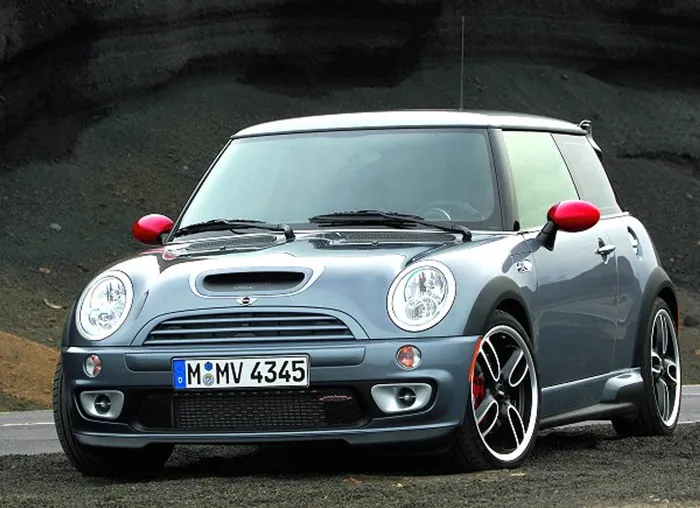Superfast Mini: it's been given The Works

The new Mini Cooper S with the John Cooper Works GP Kit is a complete sell-out. Do I mean that this modern BMW-made Mini is a betrayal of the magnificent spirit of the light nimble, space-efficient original of 1959?
As it happens, I don't take this view - but more of that later. No, when I say it is a complete sell-out, I mean that every single Mini Cooper S with the John Cooper Works GP Kit - at least the 400 destined for the UK market - has already found a buyer.
That really is its name by the way - the Mini Cooper S with the John Cooper Works GP Kit - let's call it the MCSWTJCWGPK for short.
Or rather, since even that is too long let's just call it the GP. And this car's name is not only long, it's also rather confusing.
Since the GP is a distinct, limited-edition model where the high-performance parts are an integral part of the car - it is claimed to be the most powerful production Mini yet built - it's difficult to see where the notion of a kit comes in.
The normal John Cooper Works Kit is very much a separate add-on that anyone can buy to make their Mini go faster.
This car has all of the driving appeal of the standard Mini Cooper S fitted with the Works Kit that was so well received when we drove it a year or two back - and with a bit more besides.
First, the obvious. The GP has an awful lot of "go"; with 218 horsepower, eight more than the Cooper S fitted with the Works Kit, it can accelerate to 62mph in 6.5sec and storm on to a top speed of 149mph.
The GP also has a limited-slip differential and the ASC+T (automatic stability control) system as standard, while the more nannying DSC D (dynamic stability control) is available at no additional cost.
Huge 16in brake-discs complete the picture. Road driving revealed a further strength of the GP and a single weakness. The strength was its composure and ride-quality, which were remarkably good for something set up to roll as little as the GP does on the track.
The significant driving-related weakness was the gear-change, which was far from slick and smooth - a pity, given that this is a car in which you'd want to change gear a lot.
The GP gives up all pretence at providing rear-seat accommodation. Instead, there is an extended rear load space with what looks like a strut-brace running across it. That's the sort of thing the more serious track-day enthusiast fits to a car in order to increase stiffness and improve handling.
But the woman in charge of the GP project at BMW told me that the Mini's body-shell is stiff enough already and that this bar in fact acts mainly as a luggage restraint.
Superb amalgam
In my book, though, the best thing about the GP is not the fancy equipment, but the fact that it's a Mini. This car, still selling well after five years, is a superb amalgam of British and German qualities, just like the other "British BMW's" - the Rolls-Royce Phantom, the current Range Rover and late, lamented (by me at any rate) Rover 75.
BMW's involvement in Britain's industry hasn't always been a happy one, but nobody disputes the quality of the cars.
But great as the current Mini is, I wonder what the future holds for it. You don't need to be a clairvoyant or a motor-industry expert to work out that an updated Mini will soon be on its way.
There are all sorts of hints about a Traveller-style estate version and the next-generation model may even be more British than the present one if it swaps its present Brazilian-made engine for one manufactured at BMW's plant at Hamms Hall in the Midlands.
British roots
But as Mini becomes further removed from its British roots - in terms of management and design, if not production - will the current, well-judged mix be maintained?
The commitment of the present custodians of the Mini is not in doubt but it is clear that they see Mini very much as an international, rather than a British brand.
One piece of evidence cited in support of this view is that Sir Alec Issigonis the creator of the original Mini, with his Turkish, Greek and German roots, was himself an international, rather than a British figure.
But I think it is more accurate to bracket Sir Alec with his fellow British knights born abroad like Paul Getty, Gulam Noon, Georg Solti, Yehudi Menuhin or even Terry Wogan - people who found refuge, or the best conditions to develop their talents in this, their adopted country, or who came to love it more than the country of their birth.
They are, as the cliché has it, in many respects more British than British. The Mini, whoever is making it, is the same - and it needs to stay that way if it's going to carry on being a Mini. - The Independent, London